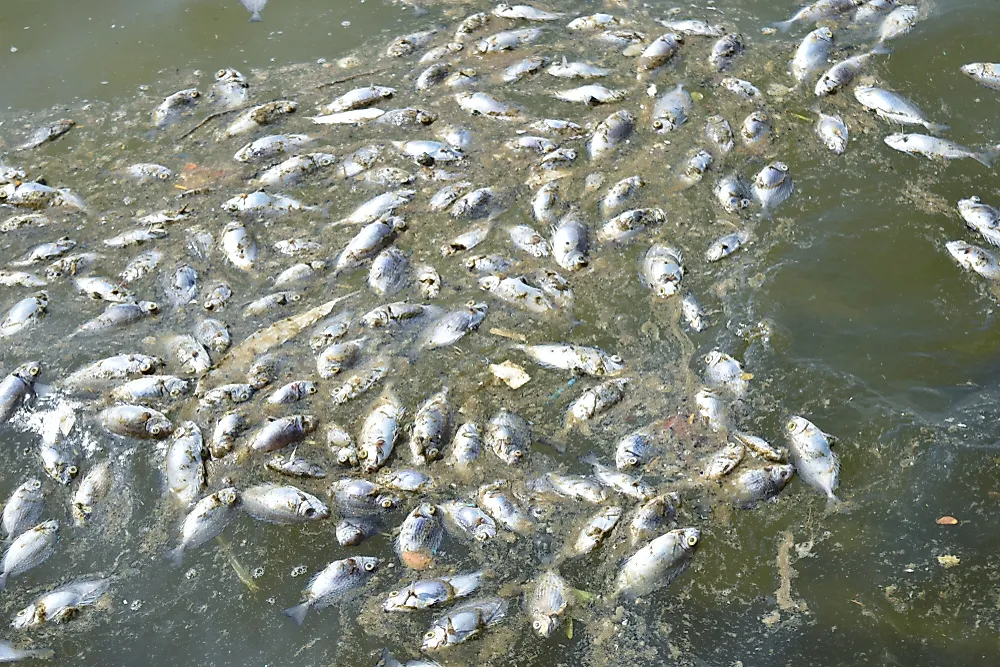What Causes Fish Kills?

A fish kill refers to the sudden and unexpected mass mortality of cultured or wild fish and other aquatic animals like prawns. It is more frequent during the summer because during this season the water is warm. Warm water has less dissolved oxygen than cold water. Hence, the fish have more difficulty breathing leading to their death. Fish kills are a sign of environmental stress. On identification, they should be promptly investigated to prevent further death of fish.
What Causes Fish Kills?
Both natural and human-made factors cause fish kills. The primary cause of fish kills is a low concentration of dissolved oxygen in the water. Consequently, any factor that leads to reduced oxygen in water could result in a fish kill. Such factors include overpopulation, toxicity of the water, parasites, and algae bloom. Algae use oxygen for photosynthesis. Subsequently, the presence of algae growing in the water means less oxygen is available for the fish. Besides the algae, overpopulation of marine life also deprives the fish of the much needed oxygen. Toxicity is also another factor that leads to fish kills. It refers to water pollution resulting from agricultural runoffs. Toxicity is also caused by hazardous waste spills, poaching with chemicals, sewage discharge, and underwater explosions. Regarding water temperature, fish kills are common during sustained high temperatures. The high temperatures lead to less oxygen being dissolved into water. An example of such a fish kill occurred in Delaware Bay on August 2010.
Solutions To Fish Kills
In the case of a fish pond, a bubbler or aeration device may be used to aerate the water mechanically. The device may also help in removing any leaves and dead algae from the water surface to improve the process of oxygen dissolution into the pond water. Other ways of preventing suffocation in fish ponds include preventing manure and animal waste runoffs from reaching the ponds, using herbicides only during the fall and spring, avoiding overstocking of fish, avoiding overfertilizing ponds, and fencing the pond. States may also handle fish kills better by receiving reports of fish kills as soon as possible. Hence, citizens need education on the importance of reporting any such incidences.
Notable Fish Kill Events In History
Several fish kills have taken place over the years. Examples include the mass death of 750 metric tonnes of tilapia and milkfish on May 29, 2011. The incident took place in Taal Lake, Batangas in the Philippines. Another fish kill took place on the Arkansas River, Ozark in Arkansas on December 2010. It resulted in the death of 100,000 freshwater drums. Additionally, on December 31, 2011 several tons of herrings died in Nordresia, Troms in Norway.
Investigating Causes of Fish Kills
The process of investigating fish kills starts by gathering 5-10 live but dying fish. One also needs to take samples of the affected water. The next step is transporting these specimens to a diagnostic lab. It is advisable to call beforehand to alert the lab and find out their readiness to accept the samples and process them. After performing several tests, the lab should be able to explain the cause of the fish kill.











